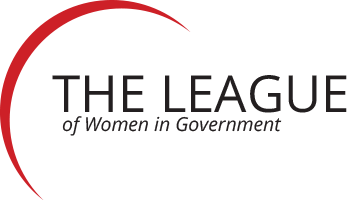Mentoring, Coaching & Bullying………OH MY!
Workplace Harassment and Abuse
By Valerie Martinelli, Leadership, Life, & Career Coach/ HR & Management Consultant
Workplace bullying can be defined as repeated, health-harming mistreatment of one of more individuals, i.e. the targets, by one or more perpetrators. It is abusive conduct that is:
- Threatening, humiliating, or intimidating, or can cause
- Work interference, such as sabotage, which can prevent work from being completed, and/ or
- Verbal Abuse
It is important to remember that workplace bullying is driven by the perpetrators need to control the targeted individuals. It is initiated by bullies who choose their targets, timing, methods, and location. It is set of acts of commission, doing things to others, or omission, withholding things from others. One of the most important points is that it requires consequences for the targeted individual. It also escalates to involve others who side with the bully, either voluntarily or through coercion. In addition, workplace bullying undermines legitimate business interests when bullies’ personal agenda take precedence over agenda itself. It is also akin to domestic violence at work.
Bullying within the workplace can be compared to domestic violence. The experience of being bullied at work closely resembles that of being a battered spouse. This is because the abuser will inflict pain when and where he/she chooses, keeping the victim off balance knowing that violence can happen on a whim. However, the hope that safety is possible during a period of peace of an unknown duration is always dangling just as it is within situations of domestic violence.
Prevention & Response of Workplace Bullying
If bullying occurs, it is important for employees to stand up for themselves against the behavior. Incidents must also be reported to management and the occurrences documented. However, it must be remembered that organizational culture and behavior begins from the top down. In order to prevent bullying in a workplace, an organization must establish and constantly support a strong and consistent culture that stops the inclination to bully before it even starts.
It is imperative for management to recognize that they must take the lead. Bullying within the workplace does occur, whether we’d like to admit it or not. Reports of bullying have increased within recent years and it has been called an epidemic. Managers must remember that much of the behavior may not be uncovered until the damage has been done. Victims of bullying may not recognize what is happening to them either. This is also true when it causes physical or mental harm and an employee’s work performance begins to deteriorate. Bullying should be broken down into categories in order for employers to understand how to properly address it. Those categories include:
- Sabotage of an employee’s performance and reputation, including the spreading of rumors
- Cruel teasing, name calling, and/ or pranks
- Intimidation, causing self-imposed exclusion or compelling the victim to do something against his/her will
It is crucial that employees and management can identify bullying behavior and address it. Maintaining a clear understanding and protocol is critical because minimizing and diminishing the impacts of this type of behavior can have severe impacts on its victims. Victims also can be too worried to come forward for fear that will lose their jobs or be retaliated against.
Reports of bullying behavior need to be taken seriously by managers. Even if it is recognized, they may be hesitant to take action. This hesitation can be compounded if the bully is an employee who is profitable and/ or productive. An organization truly needs to maintain its commitment to a positive and respectful workforce. It is necessary to have a zero-tolerance attitude towards bullying, no matter what their position is within the organization. There should be policies and/ or programs in place to prevent this type of behavior. I recommend training employees to understand the signs of bullying behavior and how to respond, including management. If a reporting structure or a proper set of protocols is in place, it should help with all employees maintaining an understanding of what the organization’s beliefs and response to bullying are. It will also help to maintain an understanding that if it is reported, a victim’s job will not be at stake. Investigations should be conducted into all reports of bullying and let others in the company know when it has acted and what the consequences were.
If an organization wants to maintain a culture of an ethical, open, safe, and respectful workplace then it will ensure its employees their safety and commitment to their well-being. Mentorship and coaching can and should be provided to employees, however, it is best to ensure that all mentors have the proper skillsets and relationships remain ethical, fair, positive, and productive. By doing so, mentees and organizations can both the reap the benefits and rewards while maintaining a healthy and innovative culture.
____________________
Valerie Martinelli, MPA is the CEO & Owner of Valerie Martinelli Consulting, LLC and Founder of Innovate 50/50. Connect with Val on Twitter @AskVMC or via website askVMC.com.







